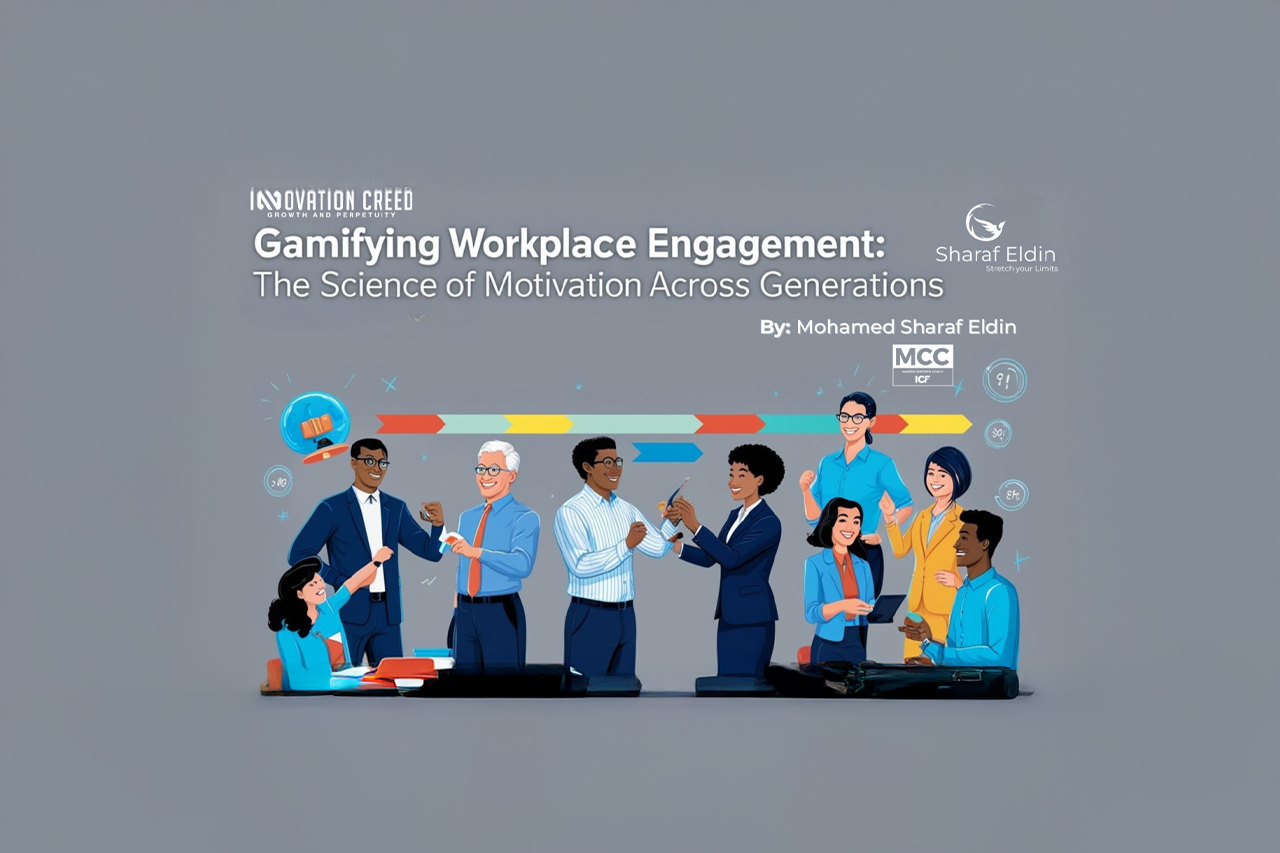
Gamifying Workplace Engagement: The Science of Motivation Across Generations
Ahmed, a seasoned Sales & Distribution manager in an FMCG company, sat in his office, frustrated.
His team’s performance was dropping—not because of a lack of skill, but a lack of motivation. He had tried traditional incentives, but something was missing. The team wasn’t excited about monetary bonuses alone, while some employees felt disengaged from repetitive rewards.
He had heard about gamification in business—the idea of using game-like elements such as challenges, rewards, and progress tracking to enhance engagement. But could it work in a corporate setting?
He decided to experiment. Instead of dictating incentives, he gave his team the freedom to choose their own reward system. Instead of rigid targets, he introduced dynamic challenges.
What happened next surprised him.
Research from McKinsey shows that 70% of employees feel disengaged at work. Gamification tackles this by activating three core intrinsic motivators (Ryan & Deci, 2000 – Self-Determination Theory):
1️⃣ Autonomy – Giving employees control over their goals and rewards increases ownership.
2️⃣ Competence – Small wins and progress tracking create a sense of achievement.
3️⃣ Relatedness – Healthy competition and teamwork boost engagement and belonging.
But to make this work across generations, we must understand:
🔹 Gen Z (18-27): Thrives on instant feedback, digital badges, and purpose-driven rewards.
🔹 Millennials (28-43): Motivated by growth opportunities, recognition, and flexible work perks.
🔹 Gen X (44-58): Prefers skill-based challenges, leadership influence, and status rewards.
🔹 Boomers (59+): Value stability, mentorship roles, and legacy-building incentives.
The key? A flexible gamification framework where employees choose what drives them.
One of the biggest failures in reward systems is the assumption that one size fits all. Instead, why not let employees select their own “reward themes”?
✅ Flexible reward themes to choose from:
🔹 The Explorer – Rewards include attending industry events, exclusive training, or travel vouchers.
🔹 The Achiever – Badges, certificates, and leaderboard recognition.
🔹 The Social Connector – Team-based outings, charity donations in their name, or mentorship roles.
🔹 The Time-Master – Extra vacation days, flexible work schedules, or priority project selection.
Employees feel ownership when they design their own recognition journey. It’s no longer about "you win X", but about "you choose how to celebrate your success".
To prevent gamification from becoming a routine that loses meaning, here are three ways to keep it dynamic:
1️⃣ Adaptive Challenges:
- Instead of fixed monthly goals, introduce seasonal “missions” (e.g., “Boost product X sales by 15% this quarter”).
- Use streak challenges (e.g., 5 consecutive successful client visits unlocks a perk).
2️⃣ Real-Time Engagement Tracking:
- Use tools like Microsoft Power BI, Trello, or Google Sheets for live leaderboard tracking.
- Conduct pulse surveys to gauge motivation shifts and tweak the system accordingly.
3️⃣ Surprise & Unpredictability:
- Introduce a mystery reward wheel where top performers can spin for surprises.
- Randomly recognize efforts outside of sales (e.g., creativity, collaboration).
A common misconception is that effective rewards require big budgets. They don’t. Here are powerful, zero-cost or low-cost rewards:
🚀 Public Recognition: A LinkedIn spotlight or company newsletter feature.
🎤 Voice & Influence: Let them lead a team meeting or strategy discussion.
📚 Growth Opportunities: Access to exclusive coaching or cross-functional projects.
⏳ Time Autonomy: Let them pick their work schedule for a week.
🛠️ VIP Tools: Early access to new sales tools or premium CRM features.
🤝 Mentorship Roles: Give them a say in training new hires.
When leaders personalize non-monetary rewards, employees feel valued beyond just numbers.
If gamification isn’t part of your company’s culture, how do you introduce it without friction?
🔸 Start Small (Pilot Program) – Introduce it within your team before scaling up.
🔸 Show Quick Wins – Document improvements in engagement, sales, or customer feedback.
🔸 Align with Leadership Goals – Position gamification as a way to boost KPIs, not just a “fun initiative.”
🔸 Educate Stakeholders – Share case studies of companies that saw measurable success.
🔸 Involve the Team – Let employees co-create the gamification model so leadership sees organic buy-in.
The lesson? When motivation increases, so does performance. Results speak louder than proposals.
The workplace is evolving. Gamification isn’t about “making work fun.” It’s about making work meaningful.
💡 Leaders who empower their teams with choice, recognition, and progress tracking create lasting engagement—not just momentary boosts.
So, I challenge you: 🔥 How will you level up engagement in your team?
If you're looking for expert coaching on designing high-impact engagement strategies tailored to your organization’s unique needs, let’s connect.
🚀 I help leaders craft innovative, motivation-driven workplaces through coaching and consulting. If you’d like to explore how gamification can transform your team, send me a message or book a consultation.
Let’s start the conversation. Drop your thoughts below. 👇
